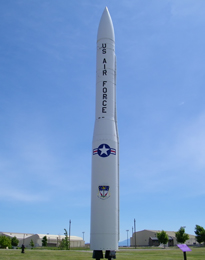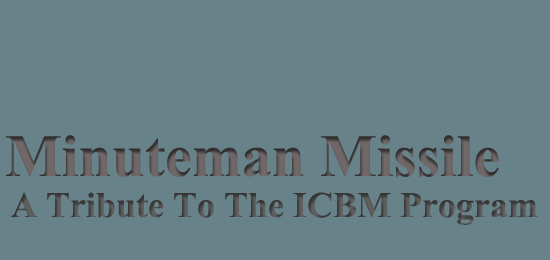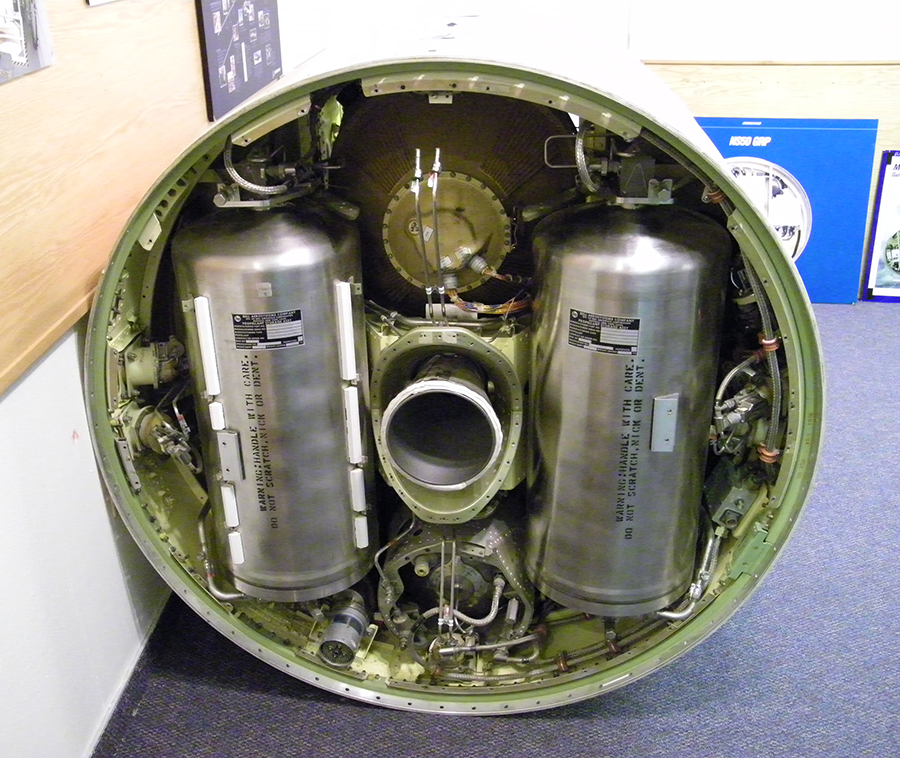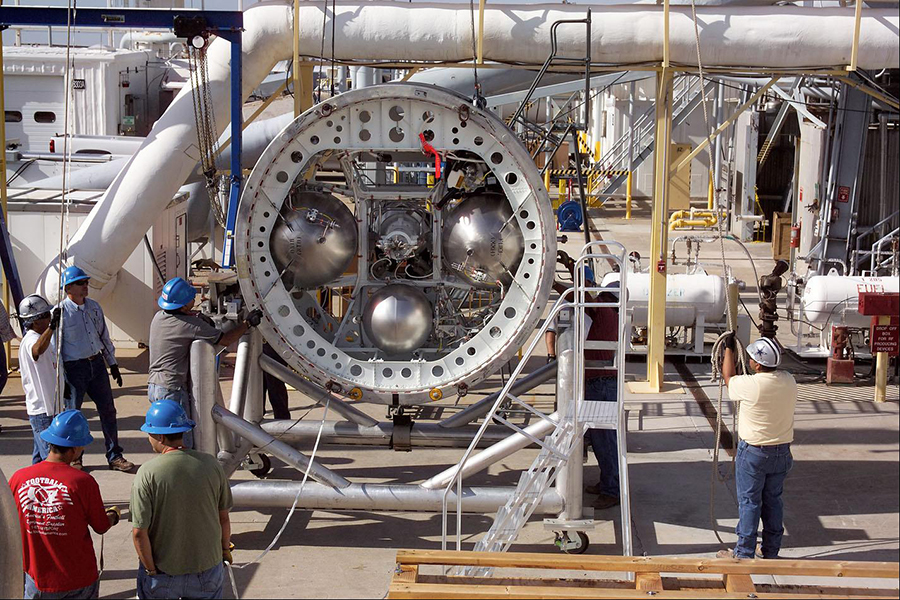Missile Payload Bus
In providing information regarding the Payload Bus, it is important first to clarify the names or terms that have been used to describe the Payload Bus. Essentially, the Payload Bus is the structure that houses the control and propulsion system used to guide the warheads to their intended designation. The payload bus is located at the top of the missile, and is connected to the Missile Guidance System, that sits directly above the payload bus.
In the image above, you can see both the Payload Bus, also referred to as the Post Boost Vehicle, that is sitting at the bottom, and the Air Force technician is in the process of attaching the top piece, the Missile Guidance System to the Post Boost Vehicle. Once these two components are fully assembled, they then attach the warhead/warheads to the top of the Missile Guidance System. Since June 16, 2014 the 450 Minuteman III missiles that remain on active strategic alert, have a single Reentry Vehicle. In the image above the Missile Guidance System pictured is the newer NS-50 Missile Guidance System.
Other names used to designate the Payload Bus or Post Boost Vehicle are, Post Boost Propulsion System, Post Boost Control System, and Propulsion System Rocket Engine. The function of the Post Boost Vehicle (Payload Bus) comes into action as soon as the final 3rd stage solid rocket booster has been jettisoned. The Post Boost Vehicle then begins its final precise maneuvering to position and release the Reentry Vehicle (warhead) at its precise point, providing the RV the ability to strike its target with extreme accuracy.
The Propulsion System Rocket Engine, PSRE, pictured at the top of the page was built by Bell Aerospace Corporation and provides continued propulsion of the Post Boost Vehicle, PBV and MGS, once the final solid rocket booster has been expelled. The PBV provides precise attitude and velocity adjustments. There are a number of nozzles built into the outer diameter of cylinder containing the propulsion system, that provides the PBV the ability to maneuver with such precision. The Post Boost Vehicle carries liquid rocket fuel to perform this task.
The Post Boost Vehicle is comprised of a gas storage assembly, two propellant storage tanks containing a hypergolic mixture of nitrogen tetroxide as the oxidizing agent and monomethylhydrazine as the fuel, a gimbal axial engine, a total of 10 attitude controlled engines, all of which are interconnected to the propellant manifold and single nozzle that provides thrust.
The term hypergolic propellants refers to the combining of these two propellants, the action of combining the propellants is what causes these propellants to ignite. The nitrogen tetroxide and monomethylhydrazine are extremely toxic, which require technicians to be clothed in full body contained suits, when working with these propellants.
An excellent depiction of the Post Boost Vehicle in action, can be viewed in the CGI video produced by Northrop Grumman, a major contracting agency that has supplied the Air Force with numerous components to the Minuteman missile. The video shows a CGI rendered depiction of a Minuteman missile launch. Toward the end of the video, you can see the Post Boost Vehicle leaving the final solid rocket booster and the PSRE performs its function.
Peacekeeper Post Boost Vehicle
Given the complexity of the Missile Guidance System and the Post Boost Vehicle of the Minuteman missile, things are only going to be that much more complex when developing a warhead delivery system capable of delivering 10 warheads on a Peacekeeper missile. The MX missile was deactivated in 2005. The image above is of one of the Post Boost Vehicles used with the Peacekeeper (MX) missile.
This image was taken at the White Sands Test Facility, where they were safing the Post Boost Vehicle. This entails technicians detanking the hypergolic propellants, venting the helium tanks and expending the ordinance so the fourth stage can be destroyed by the Air Force and any reusable hardware and propellants can be allocated for future use in the Minuteman III missile.
Below is a graphical layout of the Post Boost Vehicle, the 4th stage used on the Peacekeeper missile.
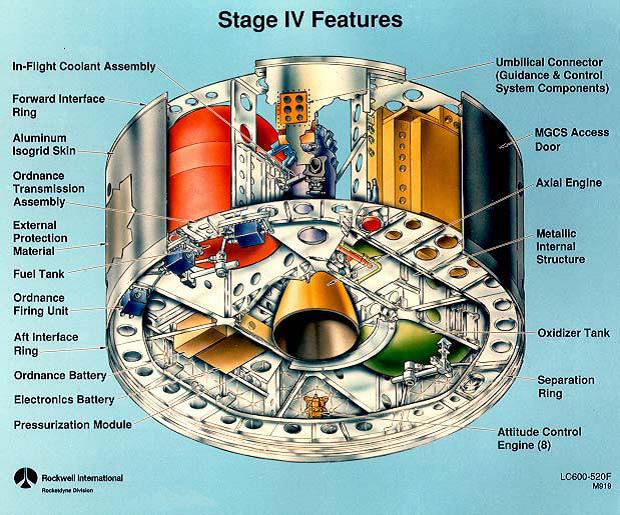
Peacekeeper Post Boost Vehicle
